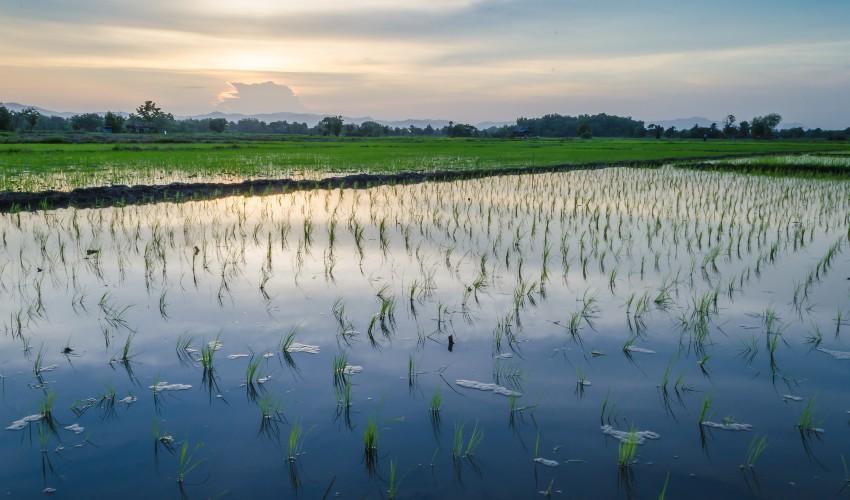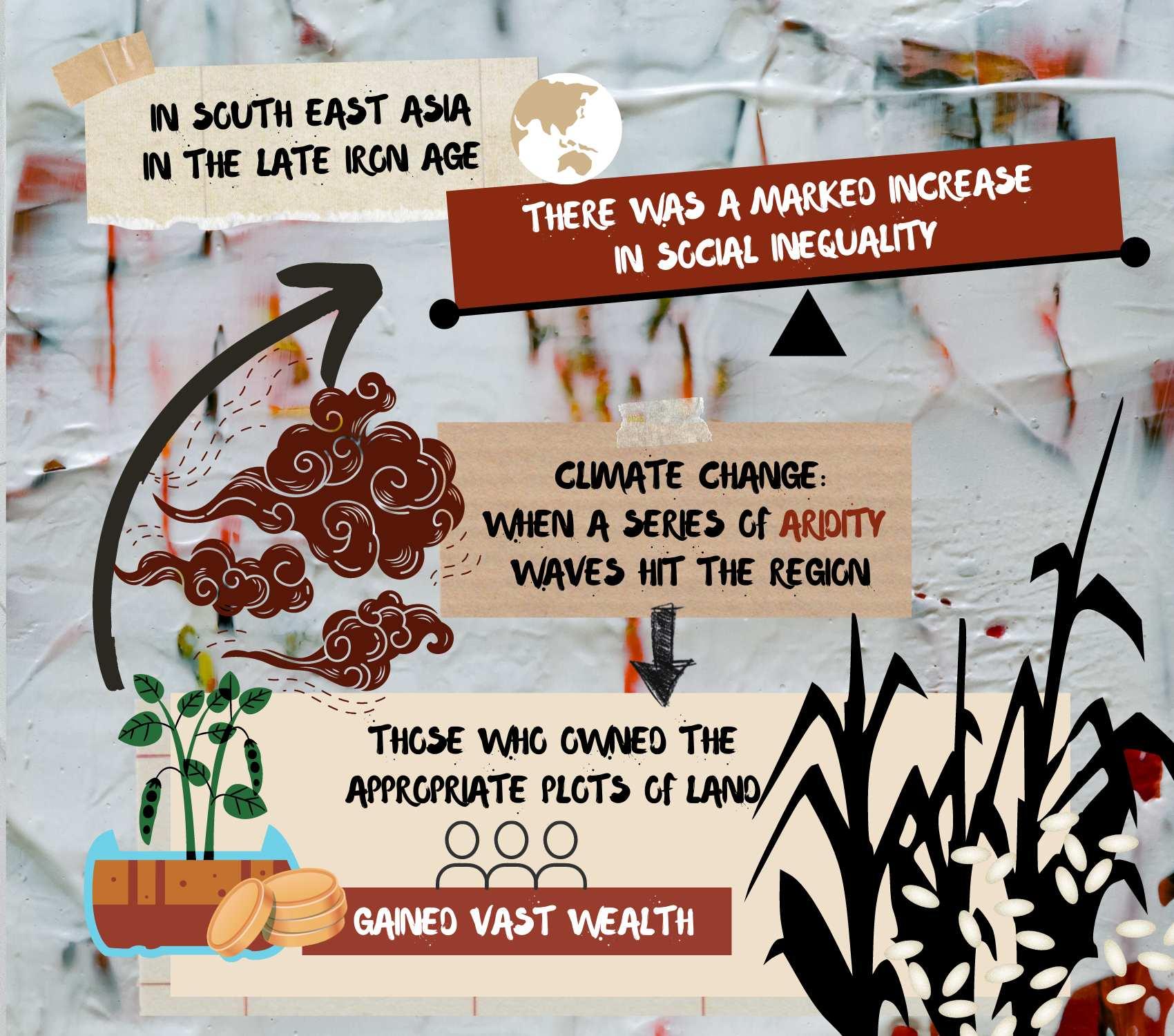
How Climate Change Led to Social Inequality in Iron Age Asia
A NEW STUDY BY MATTIA FOCHESATO FINDS THAT AN AGRICULTURAL REVOLUTION SPARKED BY CLIMATE CHANGE, WITH ITS SHIFT FROM A LABOR LIMITED TO A LAND LIMITED ECONOMY, IS AT THE ROOT OF A DRAMATIC RISE IN INEQUALITYIn an unprecedented effort to map inequality and social change in South East Asia over a period of 2500 years, Bocconi Professor Mattia Fochesato, together with a group of academics coming from various international departments of Archeology, identifies a marked increase in social inequality related to the transition from a labor-limited economy, mainly concerned with trade and crafts, to a land-limited economy where ownership of the best plots of land allowed for larger accumulation of wealth. Climate change, in particular, seems to have triggered the agricultural revolution that led to such a dramatic increase in social inequality.

Infographics by Weiwei Chen
A review of the results can be found in his last paper that appeared on PNAS (Proceedings of the National Academy of Sciences of the USA), highlighting how geography, climate change and social inequality interact in the emergence of complex societies.
The paper focuses on the archaeological findings in the Upper Mun Valley of Northeast Thailand over a period ranging from the early Neolithic (over 1800 BC) to the later Iron Age (500 AD) and confirms findings previously identified in post-Neolithic Western Eurasia, North and Mesoamerica.
The Upper Mun Valley provides an incredible source of data to historians due to the wealth of evidence coming from stratified burial sites which give a unique perspective on the complexity of the rituals of earlier societies as well as a remarkable insight into their possessions and belongings. Across the ages, the discrepancy in terms of amount, quality and refinement of objects found in burials allows the authors to estimate a coefficient measuring wealth inequality across different times and places (Gini coefficient). In this regard, a method developed by Professor Fochesato proved essential to overcome the challenges related to comparing the value of objects belonging to civilizations who lived well far-off from each other both in time and space.
These consecutive measurements show three main peaks of inequality. The first one occurred around 1800 BC in the Neolithic site of Khok Phanom Di, where there is evidence of refined exotic shell jewellery, clay anvils and large caskets covered in ochre. The second peak of social inequality was found around 1000 years later at Ban Non Wat, where the Bronze Age social elite adorned their graves with marbles, bronze artefacts and exotic jewellery. It is important to notice the similarity between these two moments of increased social inequality. The rise of both the Neolithic elites and those of the Bronze Age is tightly connected with the control of geographical choke points where the elites could control the trade of exotic goods.
Conversely, the highest increase in social inequality which occurred in the late Iron Age (500 AD) cannot be ascribed to the control of exchange choke points but on the ownership of land destined mainly to rice wet-farming. It is believed that rice was mainly cultivated on dryland before the Iron Age. However, when a series of aridity waves hit the region, the productivity of dryland dropped and a shift occurred to the cultivation of rice in permanently flooded fields. As a result, those who owned the appropriate plots of land gained vast wealth and social prominence, spurring the proliferation of exotic glass, agate, carnelian, gold and silver ornaments. This shift from labor- to land-limited economies led to a dramatic increase in social inequality.
The impact of this agricultural revolution likely caused by episodes of climate change was incredibly profound. Alongside the improvements in artisanal refinement and architectural achievements, permanently flooded embankments and the vicinity with cattle and other farm animals encouraged the proliferation of malarial mosquitoes. Many fish and shellfish found in the area of Nin Ban Jak still carried traces of deadly pathogens which contributed to the dramatic increase in infant and childbirth mortality. This evidence shows the multitude of consequences connected with the permanent rise of social inequality stimulated by adaptability to climate change.
Mattia Fochesato, Charles Higham, Amy Bogaard, Cristina Cobo Castillo.
“Changing Social Inequality from First Farmers to Early States in Southeast Asia.”
Proceedings of the National Academy of Sciences, Nov 2021, 118 (47) e2113598118; DOI: https://doi.org/10.1073/pnas.2113598118.
by Umberto Platini
